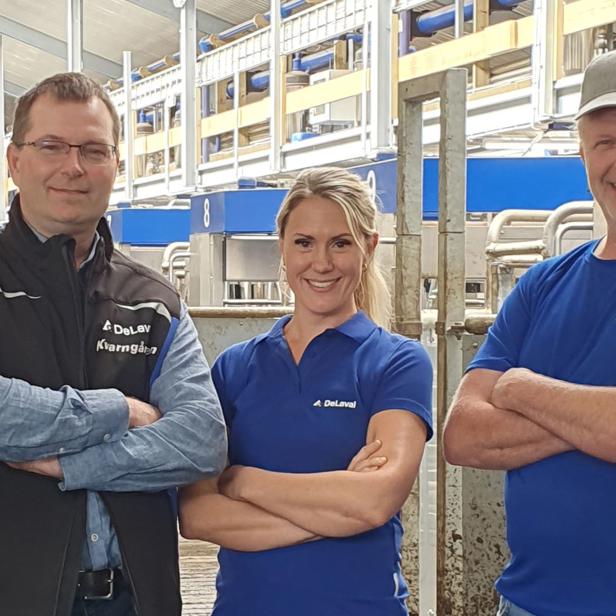Kvarngården - Långås, Sweden

Kvarngården
Farm location
Långås, Sweden
Herd size
450
Kvarngården was the first in Sweden to install a VMS Batch Milking set-up. The farm uses 12 DeLaval VMS V300 robots for its 450 cows.
Why they switched to VMS Batch Milking: Kvarngården decided to switch to a batch milking system because the existing parallel parlour had become outdated and inefficient – making milking time-consuming and difficult to manage. The original facility, built in 1994 for 90 cows, struggled to accommodate the growing herd and the increasing challenge of finding skilled staff. They considered other options, such as a carousel or a tandem pit, but found a carousel too bulky and unsuitable for their space. After exploring alternatives, they found batch milking to be the best fit. Another key advantage was that construction and installation could take place without disrupting ongoing milk production.
New set-up: Rather than installing the new robots in the old barns, a new barn equipped with 12 DeLaval VMS™ V300 robots was built. This barn is linked to the existing barns via outdoor lanes with smart gates, facilitating smooth transitions between areas and minimising disruption. The new batch milking system allows for twice-daily milking while modernising operations to efficiently manage a larger herd.
VMS batch milking begins when a gate opens, releasing the first group of around sixty cows. The cows then make their way to the available robots for milking. Afterward, they follow designated pathways that connect the dairy barn, where the VMS stations are located, to the resting area, where automated sorting directs them back to their original group. A caretaker oversees the process to ensure all cows are milked before admitting the next group. While the cows are being milked, staff can attend to other tasks, such as freshening up bedding in the empty cubicles, thus improving overall efficiency and allowing for smoother operation of the farm.
Milking amount: The cows are milked twice a day in six groups of 60 to 110 cows per group. A milking takes about 5.5 hours. In each robot, eight cows are milked per hour.
Benefits: The new setup has centralised vacuum, milk transport, and parts of the feeding process, saving man-hours on milking and cow sorting. Sorting cows in need of attention via gates is now easier and safer. The robotic system also provides much better data on cow health compared to the previous setup.
Owner, Lars Paulson also says that batch milking is much less labour-intensive than pit milking, which required three people per session. Now, just one nurse is enough, and they can often perform other tasks during milking. "We save 22 hours a day in milking work compared to the pit," says Lars. "We expect to have about 500 milking cows in the long term. There is good capacity for that now," he says.